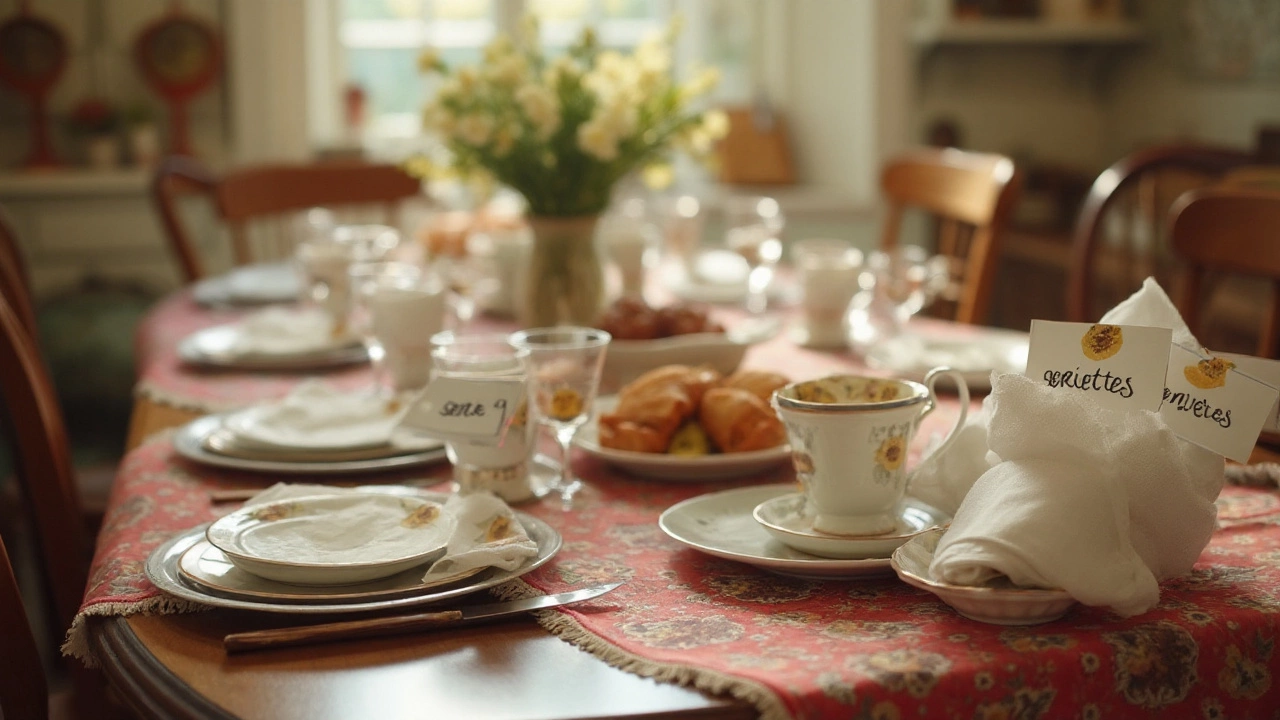British Table Etiquette Made Easy
Eating out or at a friend's house in the UK can feel a bit tricky if you aren't sure about the rules. The good news? Most of the etiquette is common sense and easy to remember. Below are the must‑know habits that make you look confident and respectful at any table.
Basic table habits
First, sit up straight and keep your elbows off the table while you eat. Place your napkin on your lap as soon as you sit down; use it to dab your lips, not to wipe your face. When the host says "please begin," start your meal. If you’re not sure when to start, follow the cue of the most senior guest.
When you’re done with a course, lay your fork and knife together, handles facing 10 o’clock, on the plate. This signals the server that you’ve finished. If you need a break, rest the knife and fork in an inverted V (fork on the left, knife on the right), which shows you’re still eating.
Cutlery and conversation
The British use the continental style: fork in the left hand, knife in the right. Cut pieces of food, then bring the fork to your mouth. No need to switch hands for each bite – just keep the fork in the left. If a dish is too big for one bite, cut a manageable piece before you eat.
Conversation should stay light and inclusive. Avoid topics that can cause heated debate, like politics or religion, unless you know the group is comfortable. Speaking at a moderate volume and waiting for a pause before adding your view shows good manners.
When you’re served a new dish, take a small bite to gauge the taste before commenting. If you like it, a simple "Delicious" or "Lovely" is appreciated. If you have a dietary restriction, let the host know before the meal starts, not midway.
When you need to excuse yourself, say "Excuse me" quietly and place your napkin on your chair, not on the floor. If you have to leave before the meal ends, you can leave the napkin folded on the side of your plate.
Paying the bill in the UK is often done by the host, but it’s polite to offer to contribute. If you’re the one treating, make sure you’ve checked the total before the server brings the check.
After the meal, keep your napkin on the left side of your plate, loosely folded. Stay seated until everyone has finished, unless the host signals it’s okay to stand. A brief thank‑you to the host and any staff shows appreciation.Following these simple guidelines will help you fit in effortlessly at British dining tables, whether you’re at a formal dinner or a casual brunch. Remember, the goal is to be comfortable, courteous, and to enjoy good food with good company.
Ever wondered what Brits call napkins? Explore the quirky world of British table talk, the meaning of 'serviette', and how UK dining lingo differs from American terms.
Aug, 4 2025
